
How to Use BATERIA 18650 X2: Examples, Pinouts, and Specs
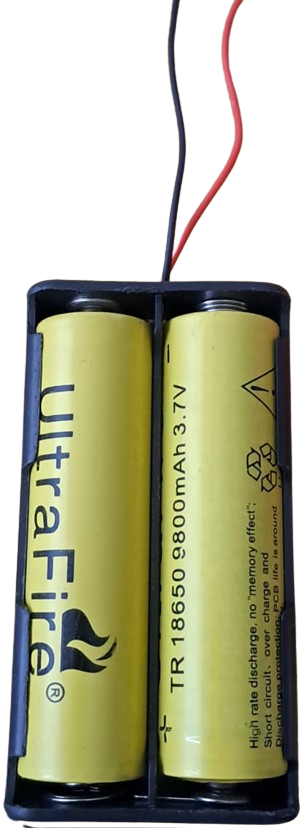
 Design with BATERIA 18650 X2 in Cirkit Designer
Design with BATERIA 18650 X2 in Cirkit DesignerIntroduction
The BATERIA 18650 X2 is a rechargeable lithium-ion battery pack consisting of two 18650 cells. Known for its high energy density, compact size, and long cycle life, this battery pack is widely used in portable electronics, electric vehicles, power banks, and DIY projects. Its dual-cell configuration provides increased capacity and voltage, making it suitable for applications requiring higher power output.
Common applications include:
- Powering portable devices such as flashlights, cameras, and handheld tools
- DIY electronics projects, including Arduino-based systems
- Energy storage for solar-powered systems
- Electric vehicles and e-bikes
- Power banks and uninterruptible power supplies (UPS)
Explore Projects Built with BATERIA 18650 X2
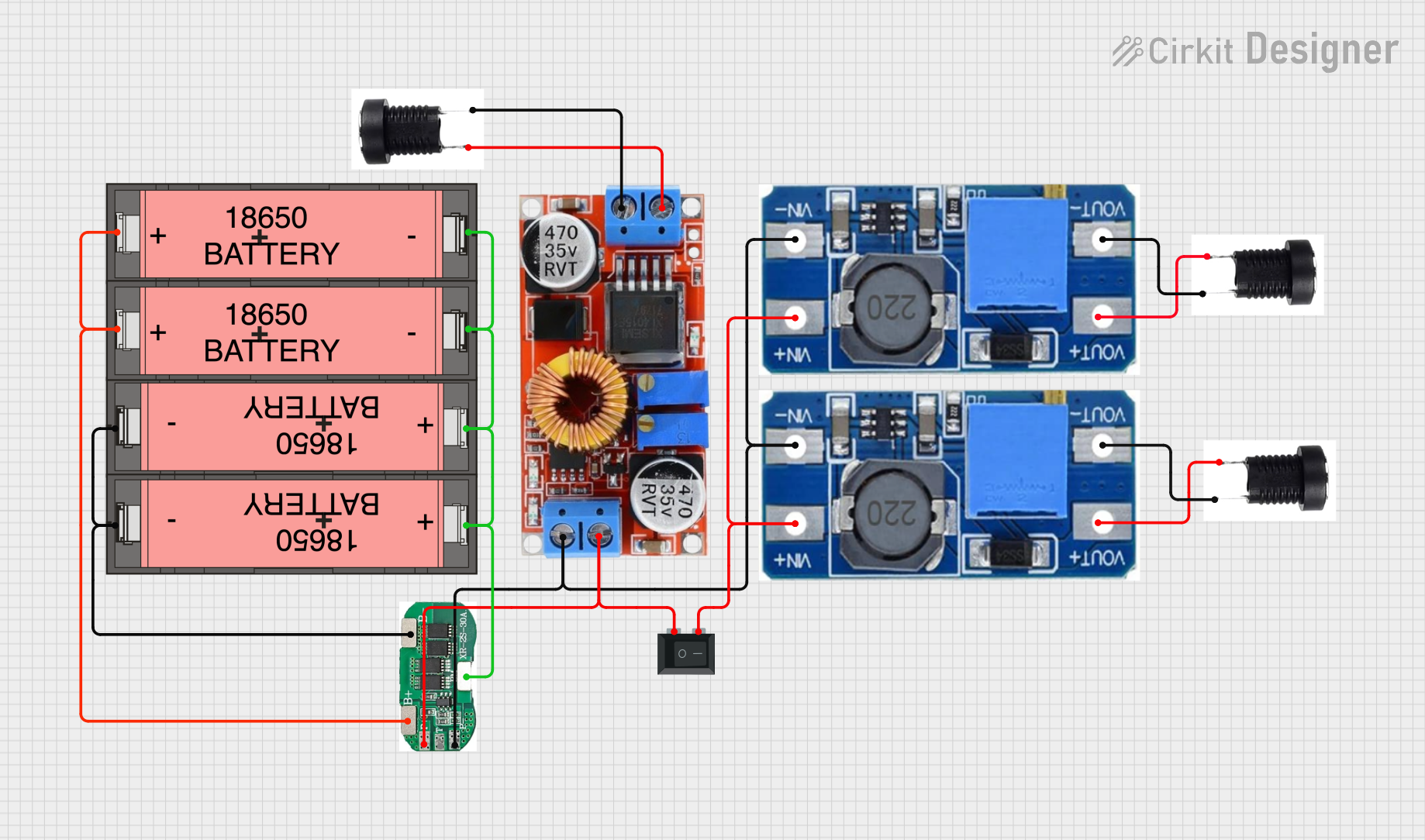
 Open Project in Cirkit Designer
Open Project in Cirkit Designer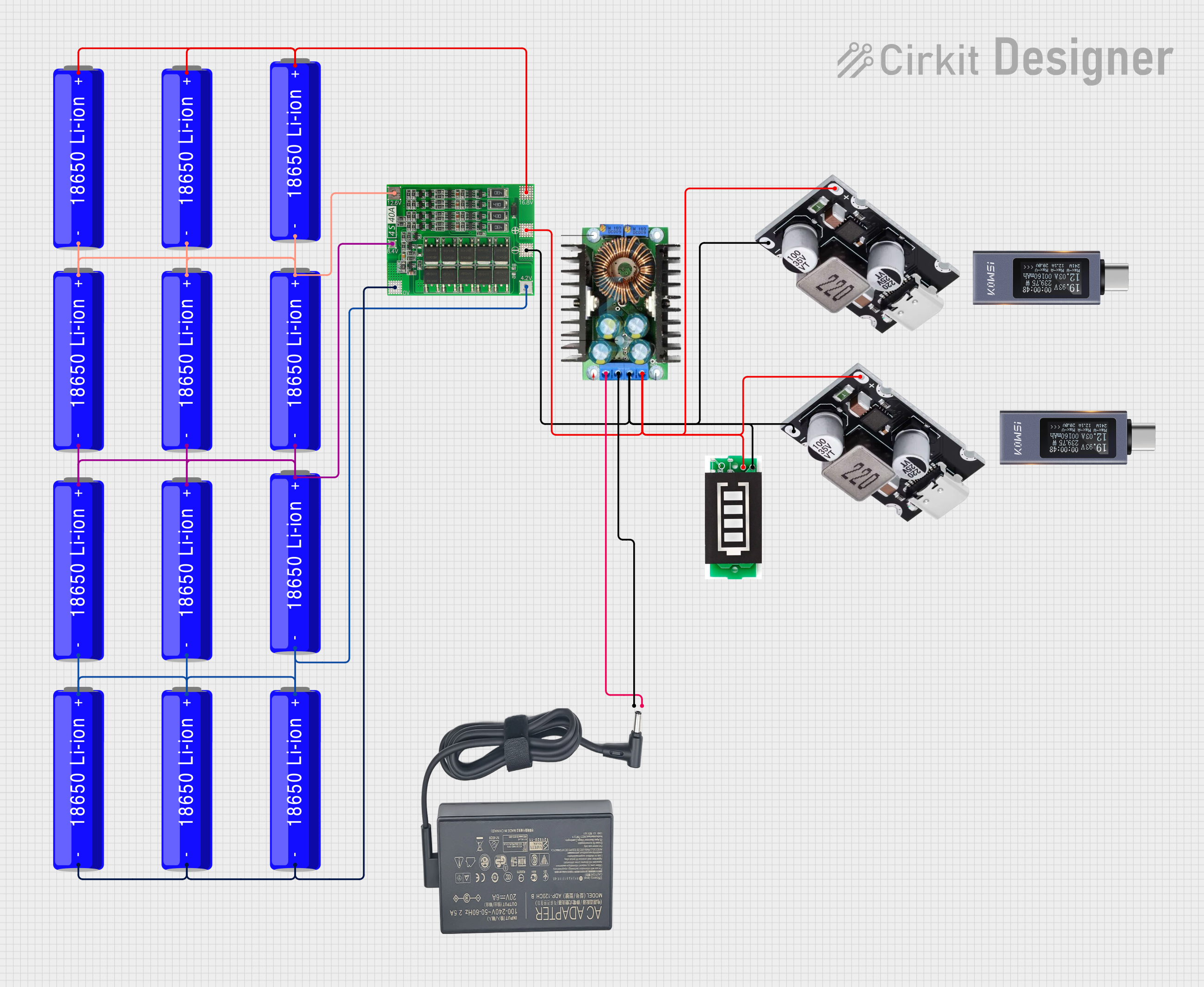
 Open Project in Cirkit Designer
Open Project in Cirkit Designer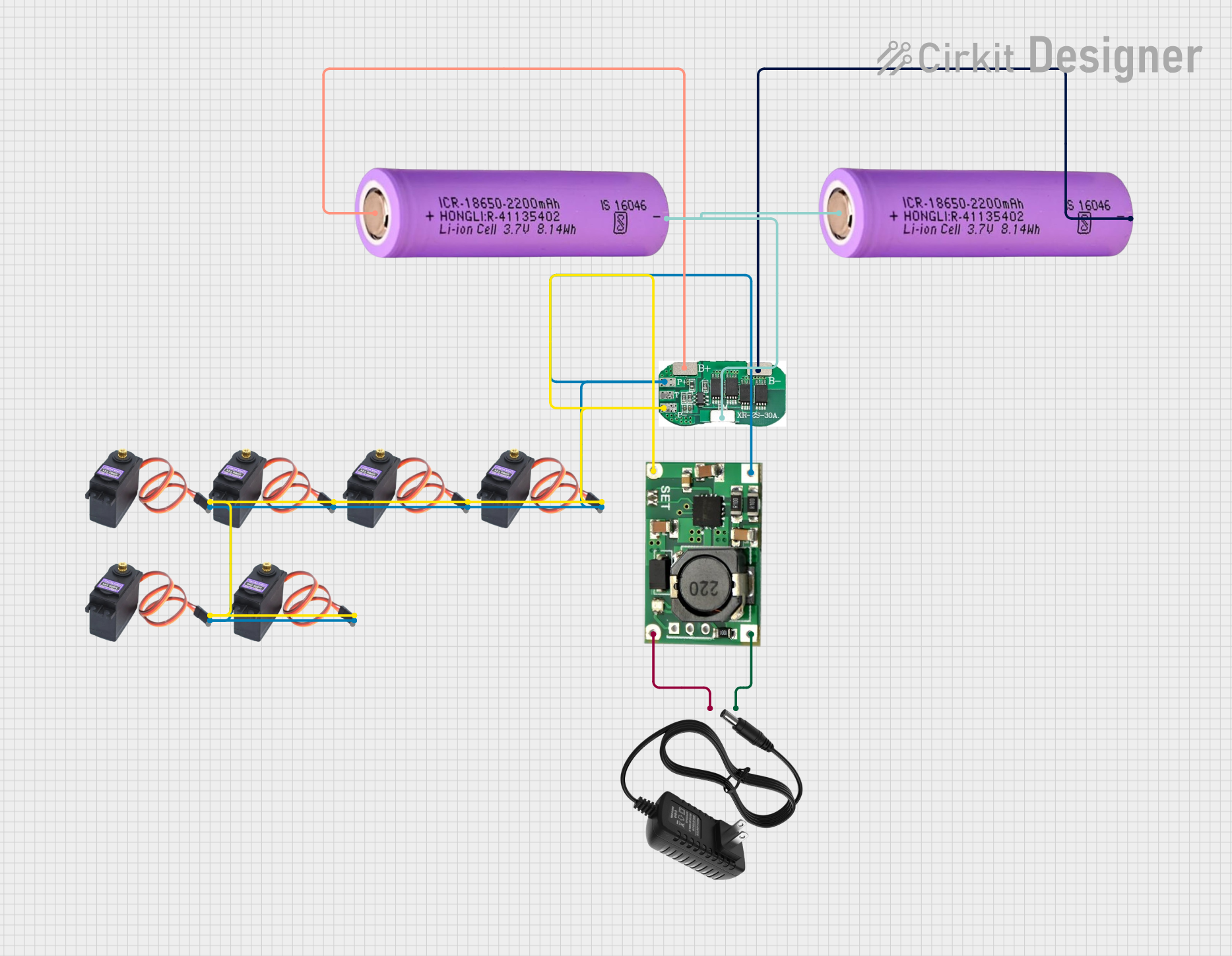
 Open Project in Cirkit Designer
Open Project in Cirkit Designer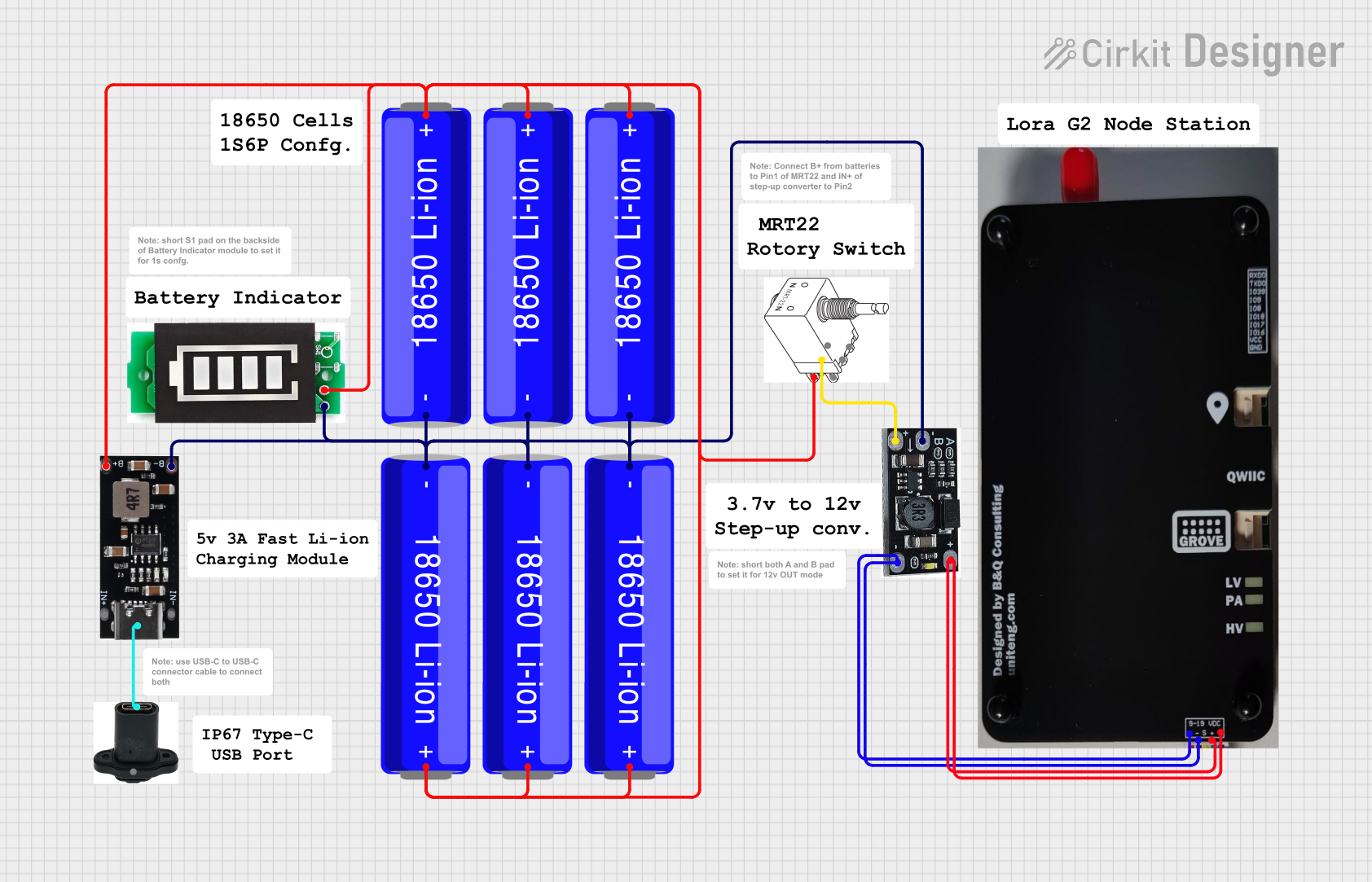
 Open Project in Cirkit Designer
Open Project in Cirkit DesignerExplore Projects Built with BATERIA 18650 X2

 Open Project in Cirkit Designer
Open Project in Cirkit Designer
 Open Project in Cirkit Designer
Open Project in Cirkit Designer
 Open Project in Cirkit Designer
Open Project in Cirkit Designer
 Open Project in Cirkit Designer
Open Project in Cirkit DesignerTechnical Specifications
Below are the key technical details for the BATERIA 18650 X2:
| Parameter | Specification |
|---|---|
| Battery Type | Lithium-Ion (Li-Ion) |
| Configuration | 2 x 18650 cells |
| Nominal Voltage | 7.4V (3.7V per cell in series) |
| Capacity | Typically 2000–3500mAh per cell |
| Maximum Discharge Current | 10A (varies by cell model) |
| Charging Voltage | 8.4V (fully charged) |
| Charging Current | Standard: 0.5C, Fast: 1C |
| Protection Circuit | Optional (depends on the model) |
| Dimensions | ~36mm x 70mm x 20mm (varies slightly) |
| Weight | ~90g (varies by cell capacity) |
Pin Configuration and Descriptions
The BATERIA 18650 X2 typically has two terminals for connection:
| Pin | Label | Description |
|---|---|---|
| 1 | Positive (+) | Positive terminal for power output |
| 2 | Negative (-) | Negative terminal for power output |
Note: Some battery packs may include additional pins for a built-in protection circuit (e.g., BMS - Battery Management System). These pins are used for monitoring and balancing the cells.
Usage Instructions
How to Use the BATERIA 18650 X2 in a Circuit
Check the Voltage and Polarity:
- Ensure the device or circuit is compatible with the battery's nominal voltage (7.4V).
- Always connect the positive terminal (+) to the positive input of the circuit and the negative terminal (-) to the ground.
Charging the Battery:
- Use a dedicated lithium-ion battery charger with a constant current/constant voltage (CC/CV) charging profile.
- Set the charger to 8.4V for a fully charged battery.
- Avoid overcharging or discharging below 6V to prevent damage.
Connecting to an Arduino UNO:
- Use a voltage regulator (e.g., LM7805) to step down the 7.4V to 5V for powering the Arduino UNO.
- Example circuit:
- Connect the battery's positive terminal to the input of the voltage regulator.
- Connect the regulator's output to the Arduino's 5V pin.
- Connect the battery's negative terminal to the Arduino's GND pin.
Safety Precautions:
- Avoid short-circuiting the terminals.
- Do not expose the battery to high temperatures or puncture the casing.
- Use a battery holder or insulated enclosure to prevent accidental damage.
Arduino UNO Example Code
Below is an example of using the BATERIA 18650 X2 to power an Arduino UNO and read the battery voltage using an analog pin:
// Define the analog pin connected to the voltage divider
const int batteryPin = A0;
// Voltage divider resistors (e.g., R1 = 10k, R2 = 10k)
const float R1 = 10000.0; // Resistance of R1 in ohms
const float R2 = 10000.0; // Resistance of R2 in ohms
// Arduino reference voltage
const float referenceVoltage = 5.0;
void setup() {
Serial.begin(9600); // Initialize serial communication
}
void loop() {
int rawValue = analogRead(batteryPin); // Read the analog value
float voltage = (rawValue / 1023.0) * referenceVoltage; // Convert to voltage
voltage = voltage * ((R1 + R2) / R2); // Adjust for voltage divider
Serial.print("Battery Voltage: ");
Serial.print(voltage);
Serial.println(" V");
delay(1000); // Wait 1 second before the next reading
}
Note: Use a voltage divider to scale down the battery voltage to a safe range (0–5V) for the Arduino's analog input.
Important Considerations and Best Practices
- Always use a protection circuit (BMS) to prevent overcharging, over-discharging, and short circuits.
- Store the battery in a cool, dry place when not in use.
- Periodically check the battery's voltage and capacity to ensure optimal performance.
Troubleshooting and FAQs
Common Issues and Solutions
Battery Not Charging:
- Cause: Faulty charger or damaged battery.
- Solution: Verify the charger output voltage and current. Replace the battery if it no longer holds a charge.
Battery Drains Quickly:
- Cause: High self-discharge rate or excessive load.
- Solution: Check for parasitic loads in the circuit. Replace the battery if it has degraded.
Overheating During Use:
- Cause: Excessive current draw or short circuit.
- Solution: Ensure the load does not exceed the battery's maximum discharge current. Use a protection circuit.
Arduino Not Powering On:
- Cause: Incorrect voltage or connection.
- Solution: Verify the voltage regulator output and ensure proper wiring.
FAQs
Can I connect more than two 18650 cells in series? Yes, but ensure the device or circuit is compatible with the higher voltage. Use a BMS for safety.
How do I know when the battery is fully charged? The charger will typically indicate a full charge when the voltage reaches 8.4V and the current drops to a minimal level.
Can I use the battery without a protection circuit? It is not recommended, as it increases the risk of overcharging, over-discharging, and short circuits.
What is the typical lifespan of the BATERIA 18650 X2? With proper care, the battery can last 300–500 charge cycles before significant capacity loss.
By following this documentation, you can safely and effectively use the BATERIA 18650 X2 in your projects.